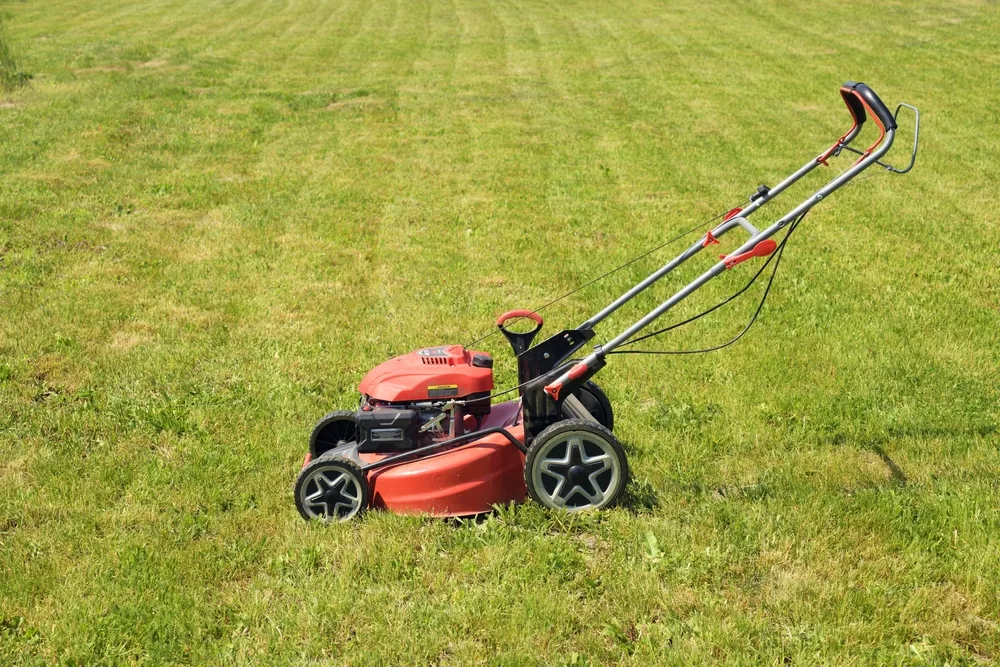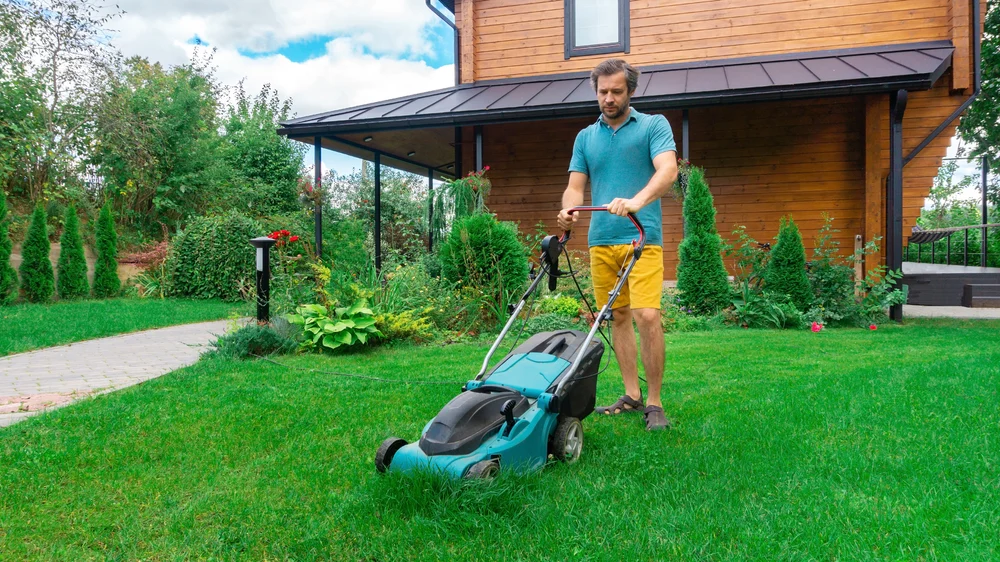Regular lawn mowing is the best way to achieve a lawn that will make your neighbors envious. A well-kept lawn is beautiful, but mowing can be trickier than it seems.
Here, we’ll address some common questions to help you with mowing.
When should you start mowing your grass?

Generally, your first mow of the year should be in early spring. Depending on the weather, late February or early March is ideal.
Start mowing just before the weather warms up, keeping the mower blades high to trim just the grass tops. This encourages growth and thickening, which helps keep weeds and moss at bay.
Can you mow grass in the winter?
Yes, you can! Grass can grow in winter, especially during warmer spells. If the weather is mild in December, some lawns may need regular mowing.
However, take these precautions when mowing in winter:
Avoid Frost: Frost makes grass brittle. Walking on or mowing frosty grass can damage or kill it, inviting disease. Wait for a mild, dry day a couple of days after a frost.
Avoid Waterlogged Lawns: Winter lawns tend to be wetter. Mowing or walking on wet grass can compact the soil, starving roots of oxygen. Wait for a few dry days before mowing.
Clear Rubbish and Debris: Mowers aren’t vacuum cleaners. Leaves and twigs can dull the blade, tearing the grass and making it susceptible to disease. Always rake or blow away debris first.
Keep It Long: Shorter days mean less light for your lawn. Scalping the lawn in winter makes it struggle to produce food. Keeping grass longer (1 ½ – 2 inches) promotes stronger plants, deeper roots, and a more resilient lawn for spring.
How often should you mow your lawn?
Every lawn is different. Fine fescues grow slower than 100% ryegrass, and shady lawns grow slower than sunny ones.
A good rule is never to remove more than a third of the grass height in one mow. Frequent, light mowing encourages the grass to spread and thicken, leading to a greener lawn.
Example Lawn Mowing Routine:
January – February: Little or no mowing, depending on the weather.
March: One or two high cuts to tidy the lawn.
April – May: At least once a week, maybe twice if growth is fast.
June – August: Once a week is usually enough. If it’s very dry, consider stopping until rain returns.
September – October: Once a week, maybe twice if growth is strong. This can be a period of rapid growth like spring.
November – December: Once a fortnight should be sufficient. Lawns can still grow quickly in mild weather.
When should you stop mowing grass?
Stop mowing when growth stops, usually by late November or early December. Frost typically halts growth, so mow until the first hard frosts.
What is the best time of day to mow grass?

Mid-morning or late afternoon is best. Early morning dew can cause grass to tear, leading to disease. Midday can be too hot, stressing the grass. Late evening doesn’t give the grass time to heal before nightfall, increasing disease risk.
How short should you cut the lawn?
A mowing height of 1 to 1 ½ inches (25 – 30 mm) is recommended. Cutting shorter can scalp the lawn, while longer grass might be tough to mow unless you have a powerful mower. Higher cuts lead to deeper roots, making the lawn hardier.
What sort of mower should you use?
There are two main types: cylinder and rotary. Cylinder mowers are good for flat lawns and require frequent mowing. Rotary mowers are more versatile, handling longer grass and uneven ground better. For most lawns, a rotary mower is recommended.
Tips for a Perfect Lawn
Sharpen the Blades: A sharp blade is essential regardless of the mower type. A clean cut helps the grass heal quickly, reducing disease risk. A dull blade tears the grass, leaving it vulnerable, looking brown and stressed.
Mulching: Many new mowers have a mulch function, chopping clippings finely and leaving them on the lawn. This works best with slightly longer grass and frequent mowing. Irregular mowing can leave clumps that suffocate and kill the grass.
